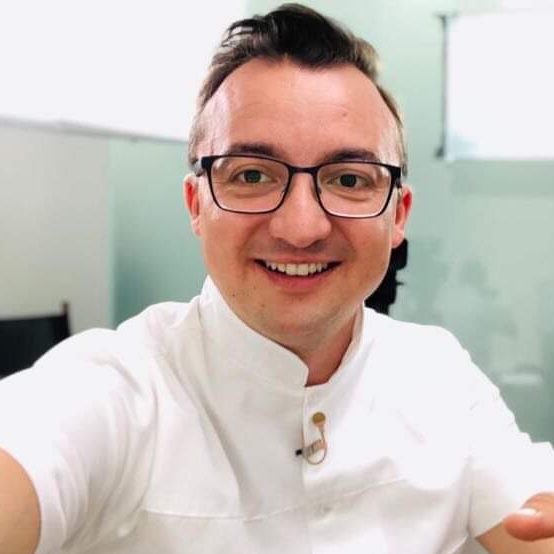OVIDIU RADESCU
Title: “Maxillary molar distalization with TADs vs classic therapy– follow up”
Abstract:
Introduction
Mini implant anchorage has become a popular concept in orthodontics over the past years and methods have been developed to create absolute skeletal anchorage systems.
The goal of this presentation is to illustrate effects of treatment by using palatal micro implants vs conventional distalization intraoral appliances in the cases of dental Class II malocclusion.
Material and method
We present the case of two patients with dental crowding and Angle Class II malocclusion. For both cases we used two types of distalizing appliances: conventional distal jet manufactured from acrylic resin, two distal screws activated 2x times a day. The appliance is using as anchorage the first bicuspid, first molars and an acrylic button fitted on the masticatory palatal mucosa.The second appliance is the palatal system where we used two intraosseous micro implants fitted in the hard palate. The system is manufactured from stainless steel wires with a central screw oriented in the sagittal direction and has been activated two turns a day.
Results
Clinically successful distalization was achieved in both situations. The maxillary posterior teeth had moved distally: in distal jet case we gained 8 mm but we had anchorage loss of 3 mm and in the palatal system we gained 4 mm. Class I canine and molar relationships were obtained in both cases.
Intraoral distalizers associated with direct skeletal anchorage is a viable method to minimize the effects of anchorage loss in the treatment of Class II malocclusions. Using mini-implants in absolute anchorage palatal system lead to improved treatment outcome and when using traditional anchorage mechanics could lead to unsatisfying results and over treatment time.
Our findings can be summarized as follows:
The major advantage in both systems, there is no dependence on patients compliance. Conventional systems are easy to fabricate with low financial costs but the absence of anchorage loss, the possibility of less total treatment time make the modern palatal system a viable choice at a good cost effectiveness rate.

Dr. Radescu Ovidiu este Doctor în Științe Medicale și Medic primar în ortodonţie șiortopedie dentofacială.
Acesta este absolvent al Facultăţii de Medicină şi Farmacie „Iuliu Hațieganu” din Cluj-Napoca, Facultatea de Medicină Dentară, promoţia 2009. De asemenea este membrual EOS (Europe Orthodontics Society), membru al AAO (American Association of Orthodontics), membru al WFO (World Federation of Orthodontics).
Domnul Dr. Radescu a manifestat o mare preocupare în vederea dezvoltării continue a cunoștințelor profesionale de specialitate, participând la manifestări științifice, cursuri de perfecționare atât în țară, cât și în marile orașe ale lumii.
